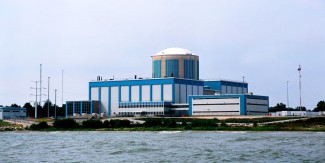
With hindsight, it’s easy to see how the closing of Wisconsin’s Kewaunee Nuclear Plant in 2013 was a harbinger of things to come. Cheap natural gas and wind power sold to wholesale markets have transformed the economics of electricity generation, and have contributed to the closures of 14 more U.S. nuclear reactors.
Most recently, utilities in Illinois and Ohio approached their legislators to ask for favorable financial bailouts for uneconomic base-load generation plants (both coal and nuclear plants). In Illinois, Exelon Corporation announced in June that it would shut down its Clinton and Quad Cities nuclear plants after the legislature adjourned without taking action. In Ohio, regulators attempted to give utilities favorable rate structures to increase the market competitiveness of the plants, but the Federal Energy Regulatory Commission (FERC) challenged the move, imposing a temporary halt on the action pending other legislative steps.
With or without regulatory favors, the market is telling us something about nuclear energy or, more accurately, about the weaknesses in our current utility retail market structures. The electricity sector as it exists today can best be described as a very confusing game of chess played by electricity utilities and state, regional, and federal regulators and operators that culminates in a crazy hodgepodge of competitive wholesale markets in some portions of the country and non-competitive monopoly utilities for most but not all retail customers. It’s an old and complex system, one that has been built up over the course of a hundred years.
And yet the energy world is changing quickly, and the U.S. electric power sector increasingly has to deal with the economic failures – nuclear power plant closures among them – of its 100+ year-old business model. The U.S. House Committee on Energy and Commerce is also questioning the current structure of “organized” electricity markets. In a letter to FERC written last month, the Committee notes that “competitive electricity markets – particularly the organized wholesale markets – continue to underachieve” and that changing consumer expectations and new technologies are prompting valid questions about the need for “new business and regulatory models within the electricity sector.”
PJM’s “Resource Investment in Competitive Markets”

Whether monopoly utility retail market structures continue to make sense in this changing energy world really is the big question, and one that merits a lot more analysis and discussion. A recent report titled “Resource Investment in Competitive Markets” by the wholesale market operator PJM Interconnection offers some of that much-needed analysis, examining whether wholesale, “organized” markets can, or cannot, survive “industry transformation.” PJM is a part of the U.S. network of independent system operators (ISOs) and regional transmission operators (RTOs) that run regional energy wholesale markets, manage grid reliability, and provide other critical energy and grid services including contract administration of some power purchase agreements (PPAs).
The paper poses this question: “Can we rely on PJM’s organized wholesale electricity market to efficiently and reliably manage the entry and exit of supply resources as external forces create tremendous uncertainty and potential industry transformation?”
On the question of entry of new resources (i.e., new electricity generation), the report finds that the wholesale market was performing well with approximately 24,000 MW of new generation cleared and committed between 2010-2015. PJM found their markets to be accommodating to energy innovation and new technologies, noting that their transparent markets “do well in pricing operational attributes and innovation of new technologies – generation, storage or demand side—that provide the desired attributes more effectively and economically.”
The area causing some of the current public debate, however, is around the exit of resources (i.e. legacy base-load generation plant closures, including nuclear power). Here the report concludes that there is no evidence that the PJM wholesale market is forcing premature retirement of economically viable generators.
The report is less conclusive about the effectiveness of the wholesale market in the face of public policy interventions into the energy ecosystem. PJM notes that its mission of providing reliable and efficient wholesale power supply “do not necessarily promote and may even conflict with other valid public policy interests that state and federal lawmakers and regulators may pursue to meet environmental, social and political interests distinct from the markets’ mission to deliver the most cost-efficient resources need to serve customer reliability.”
That last observation brings us back to the importance of policy and planning, and to a number of related questions:
- Does the U.S. energy system need to continue supporting even uneconomical nuclear facilities to achieve its global greenhouse gas reductions goals? (Nuclear power currently provides 60% of the country’s low emission electricity).
- How could a combination of distributed energy resource technologies such as demand management, energy efficiency, more distributed energy such as solar PV and wind combined with energy storage replace the loss of base-load energy generation?
- How can we stimulate energy innovation and new technologies in retail markets, as is now occurring in some of the wholesale markets?
Until we also begin to answer these questions, and until we do some comprehensive energy planning, we will continue to put our access to reliable energy at risk.

